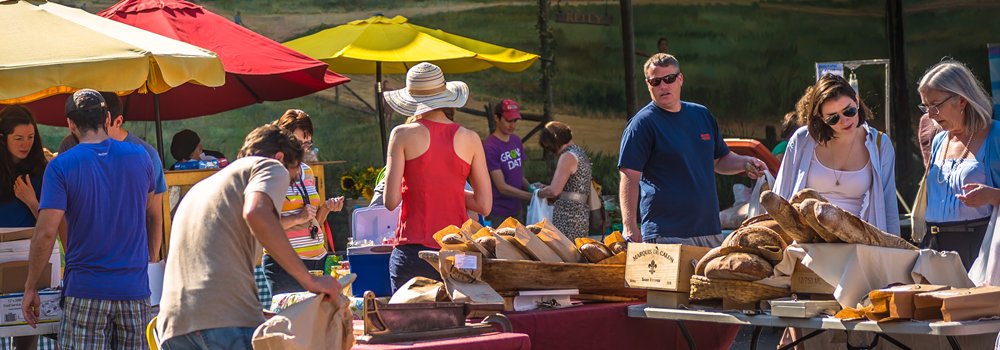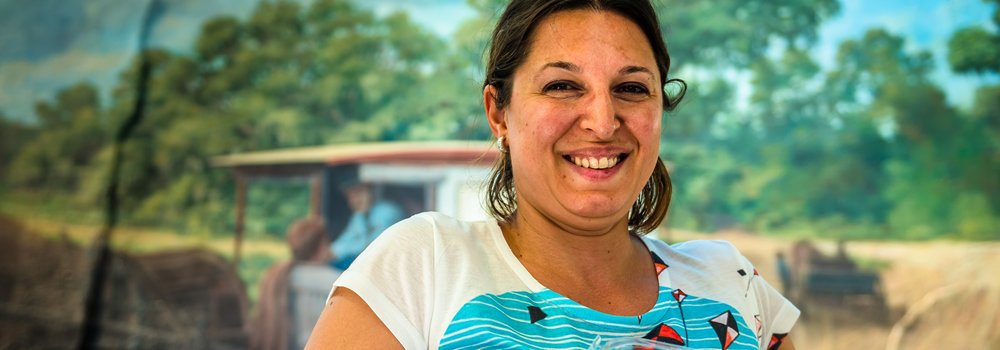
Good Food Concepts
In addition to running farmers markets, a critical component of Market Umbrella’s work is to enhance food and nutrition access and awareness in our community. The Good Food Concept of the Week seeks to shed some light on this part of our work and also to demystify the jargon.
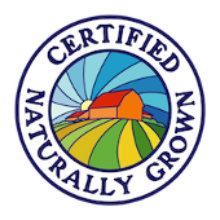 Certified Naturally Grown
Certified Naturally Grown

Crescent City Farmers Market features several Certified Naturally Grown (CNG) growers - River Queen Greens, Grow Dat Youth Farm, and Too Tall Farm. CNG farmers don’t use any synthetic herbicides, pesticides, fertilizers, or genetically modified organisms. CNG livestock are raised mostly on pasture and with space for freedom of movement. Feed must be grown without synthetic inputs or genetically modified seeds.
CNG is tailored for direct-market farmers producing food for their local communities. CNG’s certification approach relies on peer reviews in which inspections are typically carried out by other certified farmers, promoting farmer-to-farmer knowledge sharing about best practices and fosters local networks that strengthen the farming community. This model minimizes paperwork and keeps certification dues affordable. You can learn more here https://www.cngfarming.org/
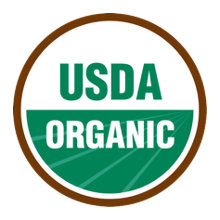 Certified Organic
Certified Organic

According to the United States Department of Agriculture (USDA), Certified Organic foods are grown and processed according to federal guidelines addressing, among many factors, soil quality, animal raising practices, pest and weed control, and use of additives. Organic certification requires that farmers and handlers document their processes and get inspected every year.
Meaning, in order to claim a product as “organic,” a farm/product must undergo organic certification. Organic Certification is no easy feat - it takes several years and a lot of money to accomplish - it’s more expensive in Louisiana because unlike other states, there is no certifier within the state, so one must be hired from further away. Quite big apples compared to the small-scale farming of most of our producers. There are actually only a handful of Certified Organic farms in Louisiana.
That being said, Crescent City Farmers Market is elated to host two USDA Certified Organic vendors - L’hoste Citrus Farm and Blue Tara Blueberry Farm.
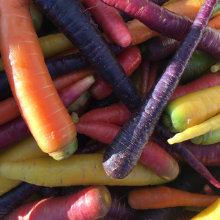 Heirloom
Heirloom

Today, produce availability in conventional grocery stores reflects 6% of the foods we ate less than 100 years ago. Heirloom varieties of produce are those types that used to be grown for a variety of reasons, primary among them flavor, but have gone by the wayside as conventional food systems prioritize shippability, shelf stability, and uniformity. If you read recipes or cooking magazines, you’ll often find directions to source these now less common varieties at the farmers market - and it’s good advice! Discover something unconventional and stock up on heirloom carrots, cauliflower, radish, peppers, squash, wild lemons, herbs, etcetera at any Crescent City Farmers Market.
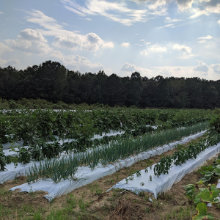 Food Justice
Food Justice

There are many injustices within our food system which often mirror other forms of inequality and oppression within our society, many of which have been exacerbated during the pandemic. The movement for food justice seeks to solve these inequities through systemic changes in the way we grow and distribute food. Achieving food justice would mean creating a world where everyone has fair access to nutritious food that is grown sustainably under just work conditions. See how activists across the country are working toward food justice in the short film Food (Justice) for All, part of the PBS documentary series Food Forward.
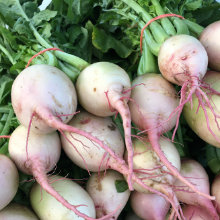 Days to Harvest
Days to Harvest
an agricultural term that refers to the time between planting and when a crop can be harvested. As a shopper, you can see the product at market, but so much is going on leading up to market day. So when we refer to being in between seasons - when variety and volume are lower than usual - farmers are hard at work planting and caring for young plants, and fields are filled with green, just not with mature produce. The amazing radish is a superstar and if conditions are right, can come to maturity in less than a month! When you consider that artichokes or garlic take almost half a year from seed to harvest, and even the brassicas like cabbage or broccoli can take 80-180 days, the radish performs an especially impressive feat.

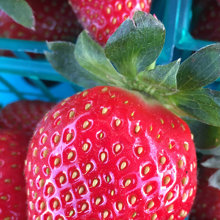 Dry January
Dry January

If you feel like you’ve been overindulging with alcohol this holiday season, or maybe drawn toward a few extra drinks as a COVID stress coping mechanism, dry January could be an opportunity to reset your relationship with alcohol. A commonly practiced new years resolution style commitment, dry January is total abstinence from alcohol for the entire month of January. Not only will this give you an immune system boost to keep you resilient through cold and flu season, but you’ll sleep better, save money, and consume fewer empty calories which can help with weight control. If you’re looking for tasty substitutes to that craft cocktail, CCFM has got you covered with sparkling kombucha, and plenty of citrus and fresh herbs to make your own juices and spritzers. Stay safe and beat the pandemic with new energy!
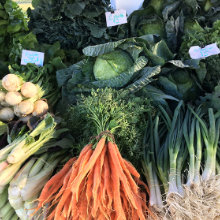 New Year Food Traditions
New Year Food Traditions

Many cultures and countries have particular "lucky" foods, and the southern United States is no exception. Greens, pork, and cornbread, as well as black-eyed peas, cowpeas, or beans, are some of the typical symbolic foods served on New Year's Day. Peas and beans symbolize coins or wealth, while greens resemble money, specifically folding money. Pork is considered a sign of prosperity in some cultures because pigs root forward, the reason many southern New Year's Day dishes contain pork or ham. Add a bit of luck (we all know we need it) to start off 2021 with these Southern Living New Year recipes!
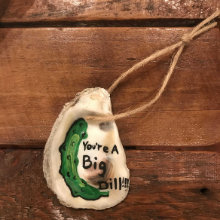 Christmas Pickle
Christmas Pickle

To pickle or not to pickle, that is the question! We never miss the chance to marry food and celebrations, so let’s talk about ye olde Christmas Pickle. In the tradition, an ornamental pickle is placed on a Christmas tree as one of the decorations. On Christmas morning, the first person to find the pickle on the tree receives an extra present from Santa Claus or is said to have a year of good fortune. There are a number of different origin stories attributed to the tradition, including an origination in Germany - either way, we are here for it! Get your Christmas pickle from Pickled NOLA - an ornament that merges the Christmas pickle tradition with southeast LA seafood folk art!
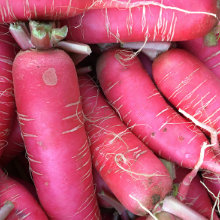 Holiday Food Traditions
Holiday Food Traditions

We all know how much Santa loves his milk and cookies. But there are many holiday food traditions taking place all over the world tied to year end holidays like Hanukkah, Kwanzaa, Solstice, and Festivus to name a few. British family members gather on the last Sunday before Christmas to stir fruit pudding while making wishes on their turn. In Mexico, Christmas Eve is celebrated with festive radish carvings, rightly named the Night of the Radish Festival. Sweden’s holiday menu includes potato casserole, a great addition to the traditional smorgasbord. Christmas in Sicily and Southern Italy means the Feast of the Seven Fishes. Traditionally, Roman Catholics in the region fast on Christmas Eve, so a feast of seven (or even more) seafood dishes at the end of the day is a true celebration of the area’s bounty. With the holiday season in full swing, we are happy to share many more holiday food traditions, the ingredients for many of which you can grab at the market in the coming weeks!
 Placemaking
Placemaking
the collaborative process by which we can shape our public realm in order to maximize shared value. It happens when we reimagine and reinvent public spaces at the heart of the community, strengthening the connection between places and the people who share them. CCFM’s move to the Lafitte Greenway Plaza celebrates placemaking. The newly improved Plaza will not only house the Mid-City Market, but partners NORD and Friends of the Lafitte Greenway are transforming the driveway of the former Brake Tag Station where the Greenway meets Bayou St. John into a vibrant pedestrian plaza. We can look forward to fitness classes during market hours, events, and activities that will lay the foundation for a welcoming public place. CCFM joins the ReFresh Farmers Market and many other businesses who’ve relocated to the Greenway, and we look forward to meeting the daily and recreational users of the Lafitte Greenway and residents from surrounding neighborhoods at the Market!

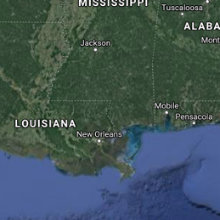 Foodshed
Foodshed

The geographic region that produces food for a population center. CCFM vendors typically come from within 200 miles which includes southeast Louisiana and southwest Mississippi. Some notable areas include Ponchatoula - known for the best Louisiana strawberries grown by Johndale’s Farm, Fletcher Farm, and others (right across the lake), New Orleans - home to many urban CCFM growers including VEGGI Farmers Cooperative, River Queen Greens, Grow Dat Youth Farm, Know Dat Grow Dat, and various SPROUT NOLA growers (literally in our backyards!), and all the way to Flora, Mississippi - home to Amorphous Gardens (206 miles from NOLA, we are so appreciative of this morning trek, Jonathan!). While global supply chains have made food from all over the world available throughout the year for better or for worse, food produced within our foodshed travels less so it is much fresher, has a dramatically smaller carbon footprint, and keeps dollars circulating in the local economy.
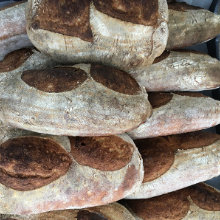 Sometimes Food
Sometimes Food

We use this concept in our Meet Me at the Market programming to help young eaters differentiate between foods that are nutritious and meant to be enjoyed often and foods that should be enjoyed in limited quantities or maybe not at all. The American Heart Association calls pizza, burgers, and ice cream “sometimes foods,” They do not offer much in nutritional value and potentially have large amounts of calories, sugar, or unhealthy fats.
Thanksgiving tends to be one of those times where we enjoy all of our favorite sometimes foods all at once and at high volume. But Thanksgiving also can be a veggie-rich day with plenty of delicious opportunities for healthful eating. Consider replacing marshmallow-topped and butter-laden dishes, with a crudite of cosmic purple carrots, watermelon radish and early broccoli. Or take a break from gravy and pies and peel a sweet and juicy satsuma.
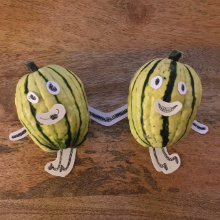 Local/Community Food System
Local/Community Food System

A community food system, also known as a local food system, is a collaborative effort to integrate agricultural production with food distribution to enhance the economic, environmental, and social well-being of a particular place (i.e. a neighborhood, city, county, or region). One of the primary assumptions underlying the sustainable diet concept is that foods are produced, processed, and distributed as locally as possible. This approach supports a food system that preserves local farmland and fosters community economic viability, requires less energy for transportation and offers consumers the freshest foods. Farmers markets, like CCFM, are hubs of local/community food systems in that they match the supply (local and fresh produce and value-added products) with demand (shoppers!), and contribute to the sustainable diet of the community.
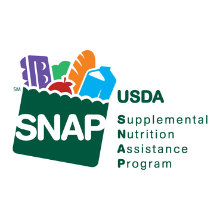 Supplemental Nutrition Assistance Program
Supplemental Nutrition Assistance Program

SNAP, still sometimes referred to as food stamps, is a USDA anti-hunger program providing monthly assistance to low-income households. These supplemental funds add an average of $1.39 per meal to the household food budget for a total of $127 per person per month on average. In 2019, more than two-thirds of SNAP recipients were families with children and the other third were households with seniors or people with disabilities. To qualify, the income of a household must fall below the poverty level which is $1064 a month for a single-person household. In addition, able-body adults must be employed or seeking employment to qualify to receive SNAP benefits. In Louisiana, this translates to almost 20% of the population qualifying to receive SNAP in a normal year.
 Bumper Crop
Bumper Crop

An agricultural term that refers to an unusually productive harvest. Citrus tends to run in cycles with several average years punctuated by a high productivity year every three years or so. By all accounts, this year was on track to be a banner satsuma and citrus year for CCFM growers, in other words, they were expecting a bumper crop. Our citrus growers tend to come to us from Plaquemines Parish, southwest of New Orleans, and outside of levee protection. These low lying wetlands are great for growing citrus, but depending on a storm’s path, can bear the brunt of high wind speeds as a hurricane makes landfall, as happened last week with Zeta. Vendors like Star Nursery, L’Hoste Citrus, A&K Citrus, and Graham’s Harvest - all based in Plaquemines Parish - are reporting significant losses. We’re expecting to see them back to market this season, but likely not this week, and probably not for as long as is usual.
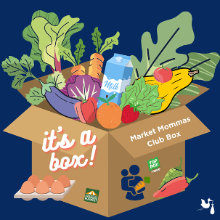 Aggregated CSA
Aggregated CSA

Also known as multi-farm CSA, an aggregated CSA works like traditional Community Supported Agriculture (CSA) in that a buyer commits to purchase produce for a season, either with an up front single payment or weekly subscription, supporting the grower by letting them know how much to plant and/or paying up front which supports the expense of planting and harvesting, a time between seasons when a producer may have expenses but no income. The primary difference is that instead of supporting one farming operation, an aggregated CSA supports several farms as producers bring product together, or an entity like a food hub or an aggregator puts the product together from many farmers for the end consumer. This is how the CCFM Box and Market Mommas Club Box through Top Box Foods works. Market Umbrella is the aggregator that brings together the products of many CCFM vendors to offer through the box. Growers know that they will have sales and consistent income, and can focus on other parts of their business like growing crops, and consumers benefit from the best of what’s locally grown.
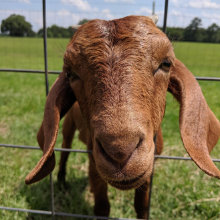 Grass-fed
Grass-fed

As defined by the USDA, grass-fed meat comes from livestock that has eaten only grasses throughout their lives since weaning, which is the natural diet for ruminants like cows, goats, and sheep. While conventionally produced meat is typically fed corn or grain, grass-fed livestock is raised on pasture exclusively. Studies have shown many nutritional benefits of eating grass-fed meat, including a higher percentage of healthy fats. There are also environmental benefits to producing meat this way that include lower amounts of water and carbon inputs per calorie output than conventionally produced meat, not to mention the humaneness of treating animals in this fashion and letting them eat what their systems are built for. Luckily, the Crescent City Farmers Market is home to three anchor grass-fed ranchers: Our Family Farm, Gonsoulin Land & Cattle, and T&R Dairy Farm. Yee-Haw!
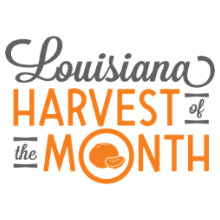 Louisiana Harvest of the Month
Louisiana Harvest of the Month

The Louisiana Harvest of the Month (LA HOM) program showcases locally grown foods in Louisiana schools, institutions, and communities. Each month, participating sites focus on promoting one locally grown item (e.g., winter squash). Activities could include serving local items in a meal or snack, offering taste tests, displaying LA HOM materials, or teaching educational lessons and activities. Louisiana Harvest of the Month is the perfect way to launch or grow a farm to school program, as it provides an easy framework to follow and ready-to-use materials. Click here for a free LA Harvest of the Month citrus coloring page!
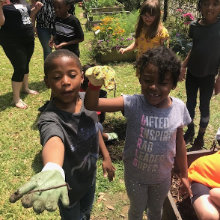 Farm To School
Farm To School

Procurement of local foods provides access to healthier school meals to more than 24 million students, (1) and advances income generation and access to land ownership for marginalized food producers; (2) School gardens offer opportunities for students to develop a sense of responsibility and connection to their community, as well as foster engagement and partnership through those connections outside the school setting; and (3) Education about food and farming is a proven approach for elevating the value of local agriculture and lifting up under-represented stakeholders in the food system.
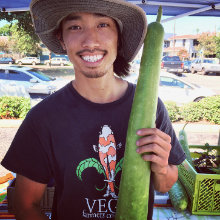 Cooperative
Cooperative

A cooperative, or co-op for short, is a type of business that is owned and operated by its members who all benefit from its profits. Within agriculture, farmers may form a co-op by pooling their resources, like land and machinery, to build a more robust business. Cooperatives also have more control over the prices they sell at, and collective buying power which leverages lower prices for bulk purchases. Historically, cooperatives have enabled groups deprived of economic opportunity due to structural racism a way to build community strength outside of the financial systems they’ve been denied access to. At Crescent City Farmers Markets, the Indian Springs Farmers Association is a joint venture of 30+ small farms from Mississippi that collaborate in growing and distributing their produce. Likewise, vendor VEGGI Farmers Cooperative is a community member-owned and operated farmer’s cooperative based out of New Orleans East, begun after Hurricane Katrina to help displaced shrimpers pivot to farming. You can find both in the home delivery CCFM Box and Mr. Ben Burkett of Indian Springs at the Uptown Market.
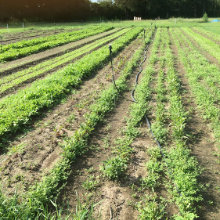 H-2A
H-2A

H-2A, or temporary agricultural workers program, allows on a temporary basis, agricultural producers in the US to fill seasonal labor gaps with foreign workers, often from Central and South America. Programs like this have been a part of American agriculture since the end of WWII, and agricultural producers of all sizes utilize it, including small local farmers. With local crops like berries available in abundance for only part of the year, temporary employees can make a lot of sense and as increasingly, the US has seen farm consolidation and fewer farm operators, it’s an increasingly difficult to find skillset. It’s been so important that even with the recent elimination of other immigration programs, this one was untouched.
 Bycatch
Bycatch

Bycatch, in the fishing industry, is a term for a fish or other marine species that is caught unintentionally while catching certain target species or sizes of fish, crabs, etc. Bycatch is either of a different species, the wrong sex, or is undersized or juvenile individuals of the target species, but to New Orleanians, bycatch means good eatin’. Four Winds Seafood, master fishers of bycatch, know the value of a croaker, excitement of gourmet calamari, flavor of a tender, flaky broiled flounder, and the celebration of a good ole crab boil. Find the “Shrimp Lady” Kay at all of our weekly markets, including Bucktown - arguably the best place to find local seafood.
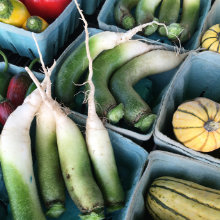 Nutrition
Nutrition

Nutrition is the intake of food within the context of the body’s dietary needs. Good nutrition supplies a person with all the nutrients—vitamins, proteins, fats, and sugars—necessary for a healthy, active life and greatly reduces a person’s risk of disease and disability. In Orleans Parish, where 84% of students qualify for free or reduced-price lunches, the pandemic and distance learning has ushered in special challenges in making sure kids who normally receive lunch and sometimes breakfast at school are receiving proper nutrition. To read more about this complex issue, check out this article. And if you received P-EBT funds to help cover the costs of feeding kids over the summer, remember, those can be spent at our markets (home delivery, drive-thrus, and walk-up) just like SNAP dollars and matched with Market Match.
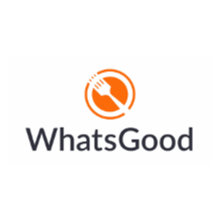 Pivot
Pivot

Officially, it means the central point, pin, or shaft on which a mechanism turns or oscillates. For Crescent City Farmers Market and thousands of small businesses, farmers, food producers, and other farmers markets, it means a total overhaul of “normal” processes. When we tried the drive-thru market for the first time back in April, itself a radical departure from our normal operations, each vendor accepted orders and payment forms as they liked. With the long wait times customers experienced, and the incredible amount of time vendors had to spend receiving orders and processing payment, we knew there had to be a better way - so we introduced WhatsGood, an online farmers market platform to take orders and process payments. That first day the online order window opened, our vendors could see the orders coming in, and called us to ask us if there was something they should be doing, commenting that they had gotten days of their life back! We’re taking this opportunity to discover new and better ways to do things. To hear more about Market Umbrella’s COVID innovations, listen here for Poppy Tooker’s feature story on Louisiana Eats.
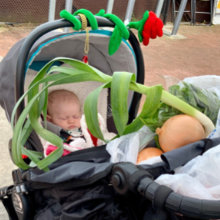 Galactagogue
Galactagogue

“Galacta-what?” you may have thought. Or maybe you didn’t. In which case, this post’s for you! Galactagogues are substances that naturally promote breast milk production. While all breastfeeding moms should consume plenty of nutrient-rich fruits and vegetables, these are some foods that are considered to be galactagogues that can be found at market when they’re in season: dark, leafy greens like kale and spinach, fennel, garlic, ginger, papaya, and spices like cumin seeds, anise seeds, fennel seeds, and turmeric. Check out our Recipe of the Week for a galactagogue inclusive recipe!
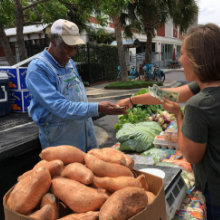 Triple bottom line
Triple bottom line

or 3BL/TBL, refers to the social, ecological and economic bottom lines of any business, whether for-profit or non-profit. In a farmers market, a community meeting place (or third place) is created where food that is sustainably produced and travels fewer miles to get to the end consumer is purchased by the surrounding community directly from the producer, directly supporting the local economy by keeping food dollars circulating locally. It’s part of why it can feel so good to eat fresh, local food (and why we look forward to a more “normal” gathering space).
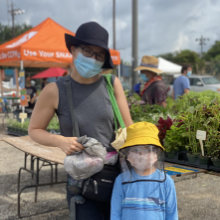 Third place
Third place

Third places are social environments outside the primary social spaces of the home and the workplace. While the workplace is a structured setting and the home is a private one, third places provide an opportunity to form spontaneous social connections among a diverse group of people. Examples of third places include public parks, libraries, cafes, and of course, farmers markets! Covid 19 has certainly challenged this as for many, there is now only a single place - the home. We look forward to brighter days when our markets again serve not just as retailers of local food, but also as third places in our community.
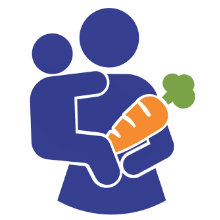 WIC
WIC

which stands for Women, Infants, and Children, is a special supplemental nutrition program of the U.S. Department of Agriculture, Food and Nutrition Service that serves pregnant women, new mothers, infants, and children up to the age of five by providing vouchers to purchase healthy foods, nutrition education, and healthcare referrals. Over 100,000 women and children benefit from the WIC program in Louisiana where vouchers can be used to purchase groceries in a grocery store. Market Umbrella has collaborated with Louisiana’s Department of Child and Family Services to link WIC with farmers markets statewide. Now families can use incentives, like the WIC Farmers Market Nutrition Program voucher, not only to stretch their food dollars, but also to access fresh food and produce at the Crescent City Farmers Market and other markets around the state. Another innovation is the Market Mommas Club where eligible mothers and mothers-to-be can receive up to $80 in market tokens for up to six months. Enroll here.
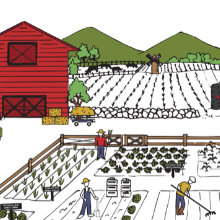 Food Safety
Food Safety

When we used to refer to food safety, it was in regards to practices that best mitigated potential unhealthy food contamination, usually through good agricultural practices, or GAPs (a certification that recognizes these positive on-farm practices). It’s a whole new ballgame, as food safety and handling practices also must address coronavirus threats with practices like social distancing and enhanced sanitation. These impacts are food system-wide and range from safety precautions and shortages at the grocery store, to the disproportionate effects of the virus on people of color who more often perform low-wage essential tasks like farm work and food processing, people who have suddenly been thrust into the position of being front line workers, without the equipment or hazard pay or respect that those roles deserve. Now more than ever, knowing your grower/producer means you’re participating in a socially and environmentally just and sustainable food system. And shopping outside for groceries is the safest place you can be!
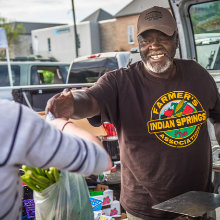 Co-op
Co-op
A co-operative, or co-op for short, is a type of business that is owned and operated by its members who all benefit from its profits. Within agriculture, farmers may form a co-op by pooling their resources, like land and machinery, to build a more robust business. At our markets, the Indian Springs Farmers Association is a joint venture of 30+ small farms from Mississippi that collaborate in growing and distributing their produce. Their beautiful spread of juicy watermelon, sugarcane, sweet potatoes, beans, and more for sale at market (and the CCFM Box) are the result of the combined efforts of a dedicated group of farmers. Learn more about the Federation of Southern Cooperatives, a prominent cooperative association of black farmers, landowners, and cooperatives in the south, including Indian Springs Farmers Association.

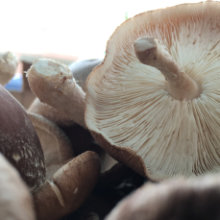 Umami
Umami

The human tongue is sensitive to five basic tastes: sweet, salty, bitter, sour, and umami. Umami means “pleasant savory taste” in Japanese, and its flavor is often described as meaty or brothy. Experiment with umami flavor in the kitchen by incorporating ingredients like pork, poultry, mushrooms, seaweed, anchovies, or miso. For more inspiration, check out these umami recipes from Bon Appetit.
 Chronic Disease
Chronic Disease

Chronic diseases are long term medical conditions like cancer, diabetes, and hypertension that require ongoing care and often limit daily activities. Six in ten adults in America suffer from at least one chronic disease, which are the leading causes of death and disability in the United States. Chronic diseases are even more prevalent in Communities of Color, especially in the wake of COVID 19. Health differences are often due to economic and social conditions that are more common among African Americans than whites. For example, African American adults are more likely to report they cannot see a doctor because of cost. All Americans should have equal opportunities to pursue a healthy lifestyle. Learn more here.
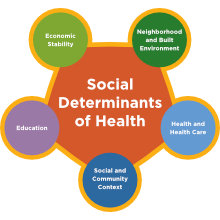 Social Determinants of Health
Social Determinants of Health

A person’s health isn’t just determined by his or her genetic code. The physical and social environment plays an important role in shaping the health of individuals and communities. Neighborhoods that have accessible affordable housing, food justice, strong social support networks, and are free of violence and environmental pollutants are all essential to promoting healthier communities. Learn more about how social and environmental conditions impact health.
 Food Apartheid
Food Apartheid

In recent years, anthropologists studying diet and culture, have re-termed food deserts, into Food apartheid. The change in colloquial term has been made to represent that “food deserts” are not desolate, empty neighborhoods, but are neighborhoods that have been deemed to be unworthy of having access to nutritious food. Many like Karen Washington believe that “when we’re talking about these places, there is so much life and vibrancy and potential. Using that word runs the risk of preventing us from seeing all of those things. What I would rather say instead of “food desert” is “food apartheid,” because “food apartheid” looks at the whole food system, along with race, geography, faith, and economics.” Read Karen Washington’s interview with Guernica Magazine to learn more.
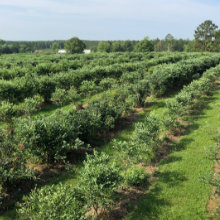 Food desert
Food desert
Food deserts are areas where residents cannot easily access vendors that sell fresh fruits, vegetables, and other whole foods that are essential to a healthy diet and lifestyle. People with low-income and communities of color are most likely to be impacted by food deserts, and research has shown that living in a food desert is a risk factor for the development of diabetes and hypertension, both risk factors in exacerbated symptoms of coronavirus. 29% of Louisiana residents live in an area that has been designated a food desert by the US Department of Agriculture. Market Umbrella combats food deserts in the GNO by “Cultivating the Field of Public Markets for Public Good” through farmers markets (drive-thrus or otherwise), delivery options through community partnerships, and SNAP education.

 Free and Reduced Price Lunch (FRPL)
Free and Reduced Price Lunch (FRPL)

This federal program provides meals at school to students from families whose income is 130-185% of the poverty level. In New Orleans, 82% of students are considered economically disadvantaged, one indicator of which is eligibility for FRPL. One of the major disruptions of coronavirus has been to students’ access to food through school, pushing many to the brink of food insecurity.
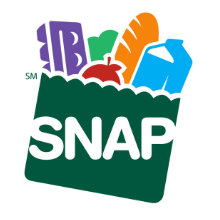 SNAP
SNAP

SNAP which stands for Supplemental Nutrition Assistance Program, formerly known as food stamps, is an anti-hunger program of the federal government that provides on average $1.37 per meal to low-income households. Last year, 1 in 6 Louisiana residents received SNAP benefits, the vast majority (71%) of which were in families with children, many were in families with elderly or disabled members and 38% of recipients are in working families. The full economic impacts of coronavirus remain to be seen but we know there’s record unemployment and a backlog of SNAP applications. CCFM’s Market Match program doubles SNAP purchases up to $20 to increase the purchase power and health and wellness of members of our community.
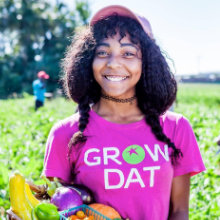 Urban Agriculture
Urban Agriculture
Most of us imagine farms as wide open fields in the countryside, but farming can also take place in the middle of cities. Urban agriculture transforms empty lots or even rooftops into viable fields, increasing the accessibility of fresh, healthy produce in cities while educating communities on food production, cutting down on food miles, creating green space and permeable surfaces… the list of benefits goes on and on. CCFM hosts several urban growers such as Grow Dat Youth Farm, VEGGI Farmers Coop, River Queen Greens, Know Dat Grow Dat, Powers Beekeepers and our featured vendor of the week (CCFM box partner and Drive-Thru participant) SPROUT NOLA.

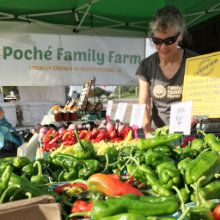 Sustainability
Sustainability

Our planet exists in a careful ecological balance with a finite number of resources. The goal of sustainable agriculture is to produce sufficient food for current populations without disrupting the ability of future generations to provide for themselves by preserving the balance of natural resources within ecosystems. Learn more about sustainable agriculture and support the Crescent City Farmers Market to create a sustainable future.
 Earth Day
Earth Day

Earth Day is an annual event celebrated around the world on April 22 to demonstrate support for environmental protection. Good food is a practice in sustainability for many reasons. Not only are “food miles” - the distance food travels from source to consumption - reduced when local food is consumed, but small farms tend to require less synthetic fertilizers and pesticides per acre than industrial monoculture farms and tend to grow heirloom and other less common varieties thereby increasing biodiversity. Celebrate Earth Day this week by supporting local farms!
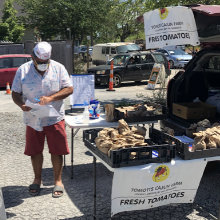 Food Insecurity
Food Insecurity

The US Department of Agriculture (USDA) defines food insecurity as a lack of consistent access to enough food for a healthy, active lifestyle. Food insecurity often leads to stress, poor nutrition, and an elevated risk of chronic disease. Normally, one in six Louisiana residents struggles with food insecurity, including one in four children, although with increased unemployment and school closures, coronavirus has made this problem much worse. Learn more about the health impacts of poverty and food insecurity.
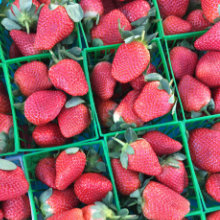 Whole food
Whole food

Whole foods are unprocessed fruits, and free from additives. If you’re looking to add more whole foods to your diet, search for things that can go straight from a field to your plate without any steps in between. Options include vegetables, fruits, nuts, and sustainably-sourced meats and fish.
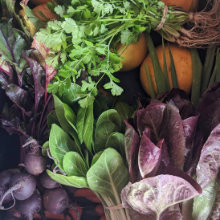 CSA
CSA

CSA stands for Community Supported Agriculture. There are many ways this can look, but usually, someone purchases a subscription before the harvest season, and then receives a “share”, a pre-packaged assortment of the harvest through the course of the season. In this manner, farmers receive income when they need it to plant, and eaters get a variety of fresh produce directly from the grower. CSAs can aggregate produce from many farms, and while some require a subscription, others do not.
Public Health
This week’s Good Food Word is Public Health - While doctors treat individual patients, public health focuses on improving the wellbeing of an entire community. This can include promoting healthy lifestyle choices, combating infectious diseases, and developing health systems that make quality care accessible to everyone. Public health also seeks to address social inequalities that impact health, such as poverty, food insecurity, and racial injustice.
Good Food
Food that is picked when ripe and yields maximum nutritional value, grown locally, which limits carbon emissions as the result of transportation and keeps foods fresh and nutritionally intact, produced by small farms whose methods are in many ways more environmentally sustainable than conventional agriculture, for which the farmer and their employees get paid fairly and can make a decent living, and is affordable and accessible for all eaters. For shorthand, we often define good food as healthy, green, fair and affordable. When you’re shopping at the farmers market, you are supporting good food!
About Us

